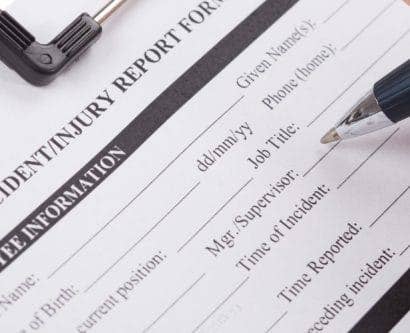How to Conduct a Grievance Hearing: Tips for Employers
A grievance hearing is a meeting that aims to address and resolve any grievance raised by an employee.
All businesses must have a written grievance procedure in place. This must contain the following information:
- How to make a complaint
- Who the employee should contact about a grievance
- How to contact this person
- The grievance hearing procedure
- How long the procedure usually takes
The grievance hearing is only one part of an overall procedure. As an employer, it is your duty to conduct the correct procedure and ensure that it is fair. This article will offer tips on how to conduct a grievance hearing, and the actions you should take to guarantee you have a fair and accurate grievance hearing procedure.
Steps in the Grievance Process
It is important to remember that the grievance hearing process is only part of the overall procedure. You must make certain that the employee is happy with the overall outcome.
The grievance hearing procedure can be either formal or informal. An informal procedure can happen if an employee brings up their issue with you in an informal setting. Use an informal conversation or meeting to resolve this.

However, if your employee has a concern or a problem that you can’t resolve informally – such as if the issue is a lot more serious – then they’ll make a formal grievance that you need to address using a formal grievance hearing procedure.
The steps in the grievance hearing process are:
- The employee makes a formal complaint to you – usually in the form of a letter – in which they state their concerns.
- Investigation – you must investigate the complaint and look into any issues raised. Be sure to investigate the situation fully, and be certain of the facts, before you organise the grievance hearing procedure.
- The grievance hearing process – here, you should hold a meeting with the employee to discuss their concerns more formally. Tell the employee that they have the right to let a fellow colleague or a trade union representative accompany them in the meetings.
- After the hearing, you should write to the employee and inform them of the outcome.
- The appeal process – the employee has the right to appeal the decision if they are unhappy with the outcome. They should do so in writing and without reasonable delay.
- Hold the grievance appeal meeting – this should re-examine the decision. The process is the same as the original hearing, but you should also focus on the reason behind the appeal, and any new evidence that may have emerged. If possible, the person who held the original hearing should not also lead the appeal.
- Provide details of the appeal hearing – give the employee a written copy of your decision and state that this is the final outcome. You should also provide the employee with copies of meeting records, such as any formal minutes.
Need a Course?
Take a look at our Business Essentials course library where you’ll find everything from Leadership & Management to Communication Skills.
The Grievance Hearing Procedure
The grievance hearing must be fair and well-conducted. There are some formal steps you should follow for a successful grievance hearing. These are:
- Introduce yourself and all the members present. Request that all attendees turn off any electronic devices to avoid unnecessary interruptions. If someone accompanies the employee, confirm the role of the companion and check whether they are a colleague or trade union representative. If no one accompanies the employee, explain that they were offered the right. Confirm with the employee that this is a formal grievance hearing.
- Outline the stages of the procedure and state that you are now at the formal grievance hearing stage. Then, outline the procedure for the hearing.
- Take the time to explore the issue. Invite the employee to state their complaint and what resolution they seek. If applicable, call witnesses to offer their accounts. The employee should receive the opportunity to sum up their case.
- Provide the opportunity for questions and discussions related to the topic. All those present must have a clear understanding of what is happening.
- Close the meeting after the case has been explained and the questioning has been completed. Allow those present to clarify that they understand the case fully.
- Record a summary of the discussion and prepare a report that summarises the nature of the grievance, the investigation, and the final decision – including reasons on how this was reached.
- Notify the employee of the decision in writing. You should aim to do this within 7 days of the meeting.

What to Read Next:
- Disciplinary Procedures in the Workplace: Guide for Employers
- Drugs in the Workplace: What Employers Need to Know
- Leadership and Management Training











